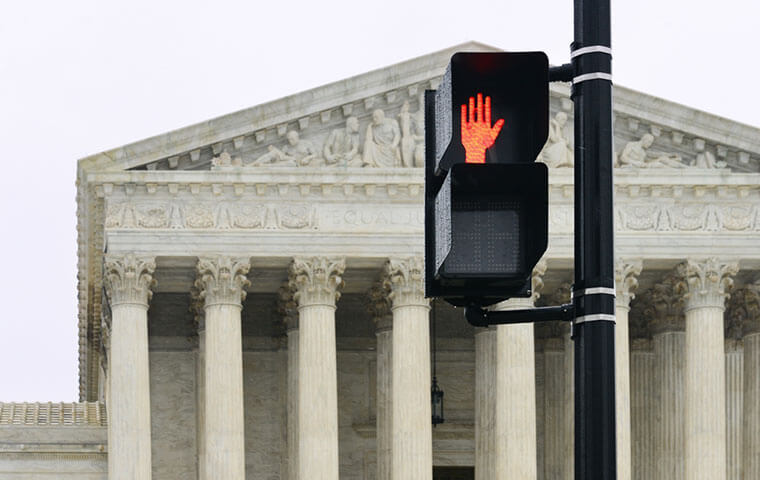 Elena Kagan and Ketanji Brown Jackson said they would have rejected the administration’s request outright, while Justices Samuel Alito and Neil Gorsuch favored hearing it immediately. Image: Orhan Cam/Shutterstock.com
By: FEDweek Staff
Elena Kagan and Ketanji Brown Jackson said they would have rejected the administration’s request outright, while Justices Samuel Alito and Neil Gorsuch favored hearing it immediately. Image: Orhan Cam/Shutterstock.com
By: FEDweek StaffUPDATED: The U.S. Supreme Court sidestepped—although potentially only for a short time—a key case that could set a precedent for challenges to a number of Trump administration federal workplace policies.
The court set aside a request by the Justice Department to lift a judge’s order blocking the firing of Office of Special Counsel head Hampton Dellinger pending a fuller consideration by the lower court. Dellinger claims that the firing—carried out in a brief email—did not meet the law’s standard that the head of the independent agency may be fired only for “inefficiency, neglect of duty, or malfeasance in office.”
In denying the request, the Supreme Court majority did not address that underlying issue but rather cited procedural considerations—that the temporary restraining order lasts only through Wednesday (February 26), when the trial judge is to hold a further hearing. Justices Elena Kagan and Ketanji Brown Jackson said they would have rejected the administration’s request outright, while Justices Samuel Alito and Neil Gorsuch favored hearing it immediately.
At the Wednesday hearing, the judge may lift the order or possibly issue a permanent injunction while the case proceeds. Either way, the case could rise up to the high court again soon and the outcome there could prove to set a precedent for others already pending in the lower levels of the courts.
Cathy Harris, fired from one of the three seats on the MSPB, has filed a suit on similar grounds to those cited by Dellinger; last week a judge similarly paused her firing pending further review. The director of the Office of Government Ethics and a member of the three-member FLRA board were fired in a similar manner, although there have been no reports of legal challenges by them.
Also pending in court is a challenge by about half of the nearly 20 agency inspectors general summarily removed by the White House personnel office with no notice or justification given to Congress as required by a 2022 law.
While those cases involve individuals, the broader underlying issues go to the limits of a President’s powers over the federal workplace.
Those issues are at stake in cases including:
* Potential class action challenges by probationary employees fired without the agency citing an issue with their performance, but rather on vague grounds such as that their employment is no longer in the public interest. Several law firms are preparing to bring such cases, which likely would first have to go through the OSC-MSPB channel before going into court.
* At least three challenges to the “Schedule Policy/Career” executive order, the successor to Schedule F, which holds the potential for moving tens of thousands of competitive service jobs into the executive service, where many civil service protections don’t apply.
* A challenge to the executive order telling agencies to prepare to conduct “large-scale” reductions in force asserting that the order violates laws and rules governing when RIFs can be invoked and how they are to be conducted—including an argument that the widescale layoffs of probationary employees now underway are illegal.
* A separate suit arguing that OPM had no authority to order agencies to lay off probationary employees and that the notices to those employees did not include the specific citation of performance deficiencies that the law requires.
Cases that have resulted in court orders temporarily blocking the planned closures of USAID and the Consumer Financial Protection Bureau, as well as some actions of the DOGE project, also raise issues of the President’s authority over federal agencies and programs that have been created in law and that have been authorized and funded by Congress.
Also likely headed for legal challenge is the Trump administration’s assertion that agencies need not honor union contract provisions that in their judgment conflict with management rights. While that policy was issued in the context of provisions governing telework, it has broader implications for others as well, including disciplinary practices and the scope of bargaining.
Several suits against the deferred resignation program similarly contended that the now-closed opportunity exceeded the President’s authority—in that case, by promising continued pay and benefits for months for those accepting it even though the needed money has not been appropriated by Congress.
Senate Eyes Vote to Pay Federal Employees Working Unpaid
Series of Bills Offered to Address Shutdown’s Impact on Employees
Public Starting to Feel Impact of Shutdown, Survey Shows
OPM Details Coverage Changes, Plan Dropouts for FEHB/PSHB in 2026
Does My FEHB/PSHB Plan Stack Up? Here’s How to Tell
2025 TSP Rollercoaster and the G Fund Merry-go-Round
See also,
TSP Takes Step toward Upcoming In-Plan Roth Conversions
5 Steps to Protect Your Federal Job During the Shutdown
Over 30K TSP Accounts Have Crossed the Million Mark in 2025

